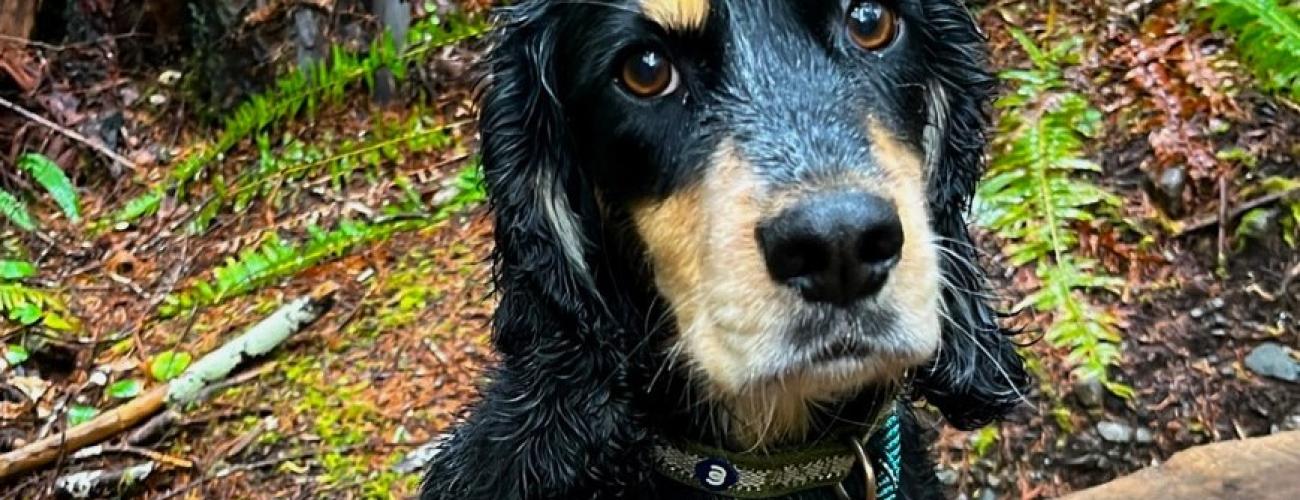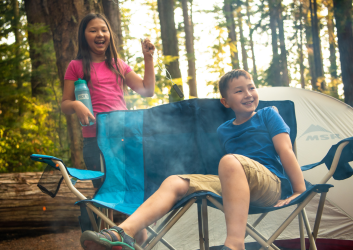How to have a great state park visit with dogs
Paws up for parks!
Let’s get real here: For dog families, it’s not a hike, campout or road trip unless your four-legged trail buddy comes with you. While embarking on said adventure is optional, getting back healthy and whole is mandatory! And we’re aiming to leave you with only good memories when you visit state parks.
So, we have a few tips for getting out and camping out with your canine BFF.
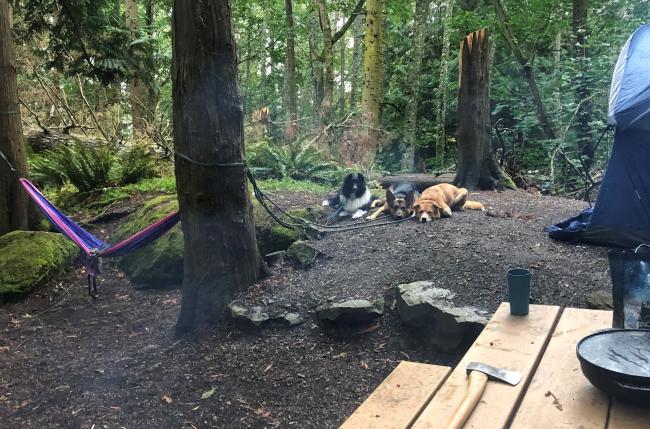
Trail tips
We know your dog wants to run free, but our leash rules are not a punishment – they’re there for everyone’s safety. That includes you, your dog, wildlife and other visitors.
Many folks are scared of dogs. Your fur baby may be a big softie, but even saying, “It’s okay, they're friendly,” won’t assuage some peoples’ fear. Keep your dog from approaching people unless someone asks to pet or starts oohing and ahhing about how stinkin’ cute they are (which, of course, you already knew).
Conversely, if your dog is not dog or people-friendly, please warn folks – especially children, before they get close. Nobody wants to yell at a stranger – much less at a stranger’s kids, but we suggest being firm if your pup is a jumper or a fear biter. On that same note, we encourage caregivers to talk to their kids about asking first before approaching or touching someone else’s dog.
Predator or prey?
Another reason for leash rules: In the natural pecking order, a dog can be seen as prey to some wildlife (raptors, big cats, coyotes, black bears) and a predator to others (deer, rabbits, marmot, turkey, horses). Leashing your pet can be the thing that keeps them from dinner – both eating and becoming.
Keep in mind that most prey will fight back, and getting kicked by a horse or gored by a deer is not how you want your pup to end their vacation.
Also, when dogs chase wildlife – or something they see or smell – they can get lost or into deep water. Even if your dog is normally well-behaved at home and has excellent recall, our parks are an abnormal environment with new sights and smells that might be too tempting for an off-leash dog to ignore. Tricky whales, seals and waterfowl have been known to lure dogs out into the water and exhaust them before they can get back to shore. Excited pups have also run over the edges of Wallace Falls chasing critters or out of pure excitement.
Again, we don’t say these things to scare you. We want to keep you and your pup safe, we want to protect our rangers from heartache and we want everyone to have a good time in our parks.
Don’t be a trail hazard
On mixed-use trails, the leash serves another purpose – to keep your dog out of a tussle with something big or fast. Heel or pick up your pooch if a horse or a mountain bike comes by. A horse can easily spook and injure itself, its rider or your party. Mountain bikes zip downhill at high speeds, and you don’t want your dog to chase and get in an accident. And finally, a well-heeled hound or a shorter leash will keep you from inadvertently tripping a runner or skater.
Won’t you be my neighbor?
Camping with dogs is just fun. Pups provide warm cuddles and a feeling of safety for solo campers. And dogs + kids + snuggles in the tent go together like chocolate, graham crackers and marshmallows around the campfire.
But dogs hear and smell things we don’t, and they often feel the need to alert us. Your neighbors, however, may not appreciate Fido howling a warning at 2 a.m.
When camping with an anxious dog, we suggest booking a campsite on the end and/or outside part of the campground loop. One Parks staffer says she parks her car between her site and her neighbors’ to minimize stimuli for her cute Corgi. She also said she sometimes opts to sleep in the car versus setting up a tent, to minimize noise that might cause her brave defender to bark.
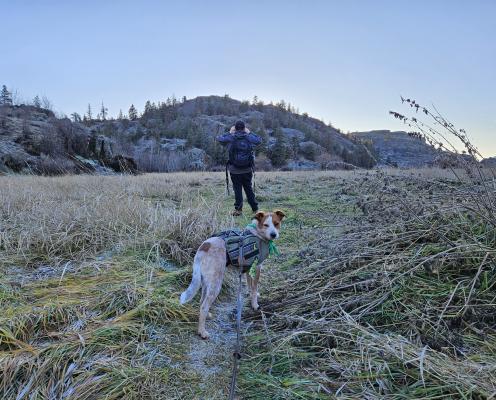
Health and wellness
Of course, you’ll want to carry water and snacks for your pooch (or get them a doggie backpack and have him carry it). Never leave them in a car in sunny weather. According to the American Kennel Club, the inside of a car can reach 100 degrees in just 20 minutes on a 70-degree day.
Also be on the watch for ticks and other biting or stinging insects. Bring a tick comb, especially for longer-haired dogs. In some parts of the state, you’ll also need to be snake aware.
If you’re traveling far, we suggest researching emergency vets near your destination and knowing their hours. You can even call the park ahead of time and ask local staff. Make sure your dog’s up on their shots – in case they get into it with a grumpy squirrel.
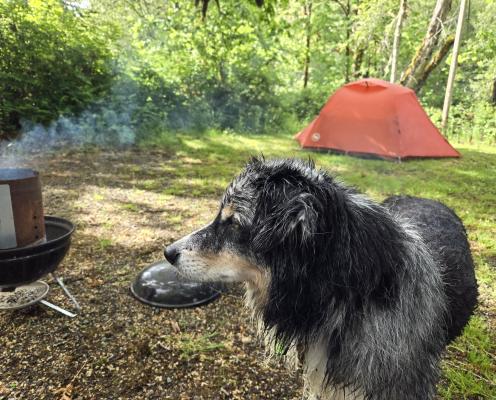
Know before you go
Most state parks welcome dogs, but we do have a few culturally or environmentally sensitive areas where they’re not allowed. Look up your destination on our website and make sure your canine bud can accompany you on all parts of your state park getaway.
Hygiene
And it goes without saying that we expect all dog parents to pick up pupper’s waste. Check out our blog, “Do your doodie” to learn why and how to bag it and carry it out!
Happy camping this summer to you and your two-legged and four-legged family members!
Originally published June 03, 2024

